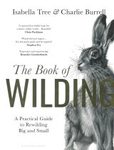"[...] In this second edition Sibley has taken on board many of these criticisms while refining many of the key elements. Numerous minor flaws in the artwork are fixed, an additional 111 species have been added, the species order has been changed to reflect the latest taxonomic consensus and the range maps have been updated and improved. The more substantial changes include a major overhaul of the text with a much needed increase in quantity and a significant shift in emphasis towards highlighting the key field marks. The artwork too has an increased focus on how to identify tricky species groups with more illustrations showing direct comparisons which again highlight the key identification characters. Regrettably not all the changes have been for the better. The most conspicuous problem is the colour reproduction which is considerably darker than the first edition. The reds, oranges and greens seem most affected with, for instance, the orange breast of the Red-shouldered Hawk appearing a deep chestnut-brown. Those with less than perfect eyesight may also have problems with the small size of the font used for most of the text.
So should you buy this latest edition? Well, that depends upon your situation. If you’re looking for your first guide to all the birds of North America then I would say look no further. If like me you’re considering an upgrade then the decision is trickier. Personally I’m not inclined to replace my 1st edition just yet. Hopefully there will be a reprint which fixes the issues with the colours or better still, the more ‘pocket-friendly’ eastern and western versions of the guide will receive updates."
– David Hodkinson, BTO book reviews, September 2014
"It is almost 14 years since the ‘Sibley Guide’ first appeared. It soon became established as the most detailed and authoritative guide to North American birds [...] In this substantially revised second edition, the author and artist, David Sibley, has introduced numerous changes and improvements [...] At first glance these changes may not be particularly evident but, if you are familiar with the first edition, they become apparent as you delve deeper into this new guide [...] In the original, many plates appeared too bright and richly coloured; second time around these have been toned down and colour reproduction is generally more accurate. In a few cases this has gone a little too far [...] The excellent explanatory and introductory pages are generally clear and concise. They include a key to the maps, which have been updated throughout, are larger than in the original book and show deeper colours with improved contrast. Additional text has been added alongside the maps providing information on habitats, behaviour, subspecific variation and vocalisations. Another useful inclusion is the comparison of moult-cycle terminology, with the ‘Humphrey-Parkes’ terminology (favoured in North America) losing out here to the much clearer ‘calendar-year’ terminology preferred in Europe. One change for the worse has been the switch to a finer and paler font, which lacks contrast with the page. Moreover, the font size used for distribution and subspecies discussions uses an even smaller font. If you have young eyes, this may not be a concern, but I suspect it will frustrate many older readers. [...] These small yet niggling errors apart, this is a superb guide and one that anyone who plans to birdwatch in North America will find invaluable. For those new to Sibley, I would heartily recommend it, since no other guide provides so much detail, but perhaps hold off until you need to buy, in the hope that the next print run corrects the colour concerns. If you already own the first edition, is this second edition worth buying? For the extra illustrations, yes, as these provide a complete illustrated guide to all of North America’s birds. However, if your interest is primarily the identification of vagrants, you will probably need the recently published Rare Birds of North America (Howell, Russell & Lewington 2014) as well, since it depicts vagrants in much greater detail."
– Peter Kennerley, British Birds 107(7): 431–432
Reviews of the first edition:
"Undoubtedly the finest guide to North American birds"
– Birding
"A masterful volume written and illustrated by one of the continent's most highly respected field ornithologists"
– Birdwatch
"Once in a great while, a natural history book changes the way people look at the world. In 1838, John James Audubon's Birds of America was one [...] In 1934, Roger Tory Peterson produced Field Guide to the Birds [...] Now comes The Sibley Guide to Birds"
– The New York Times







































